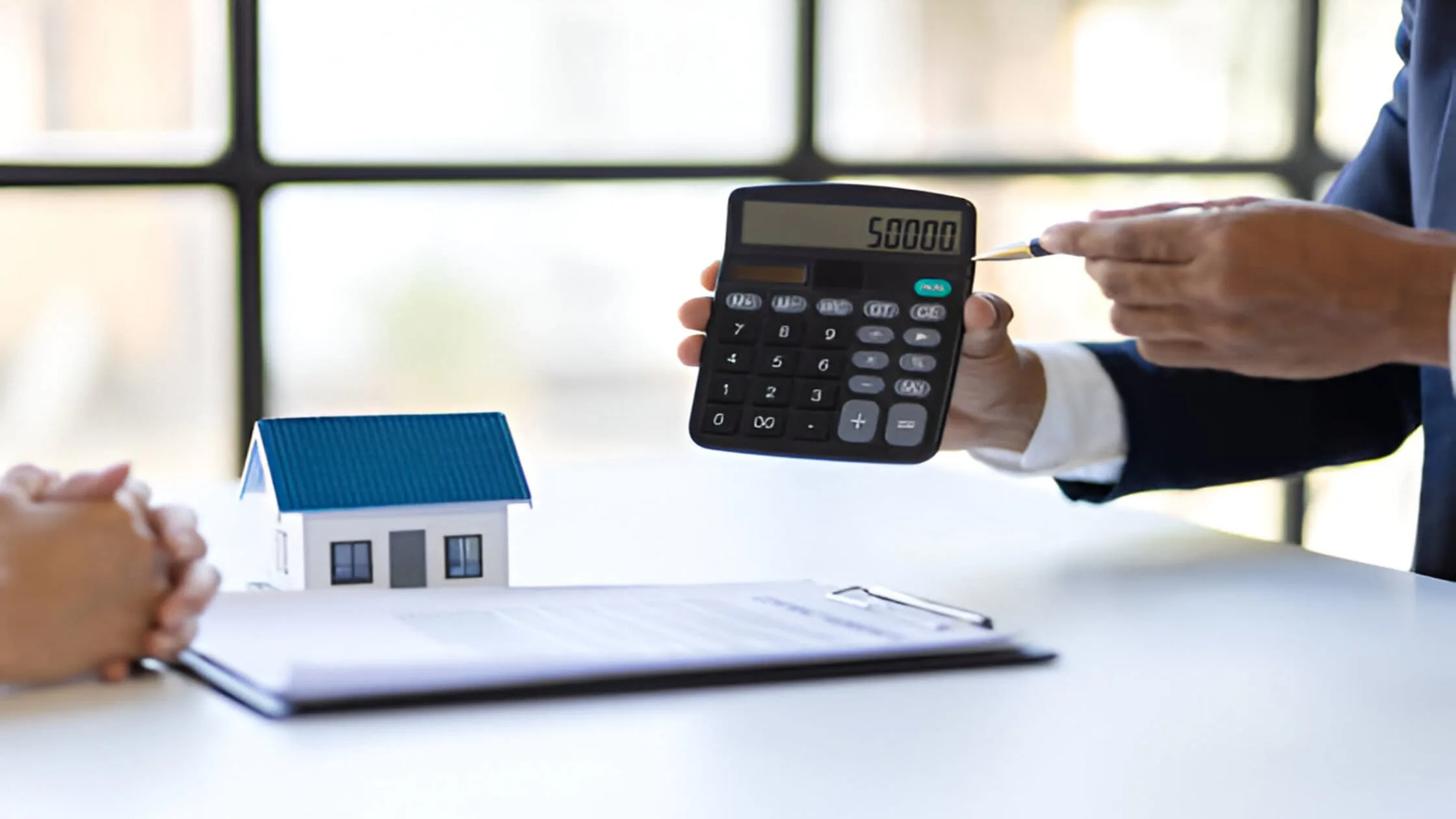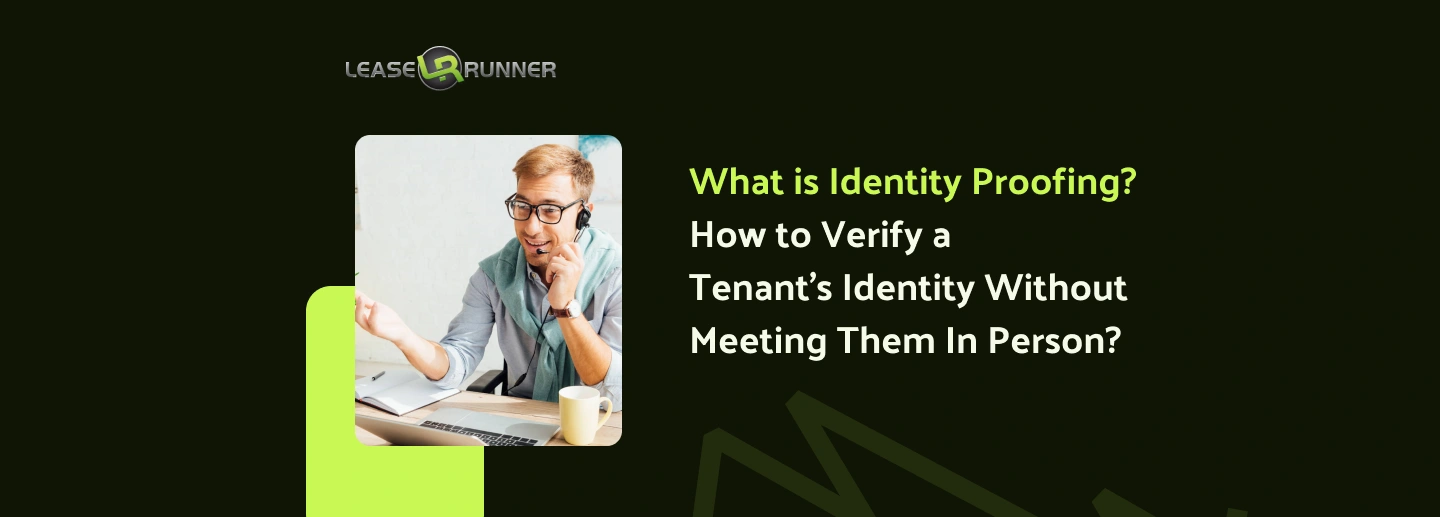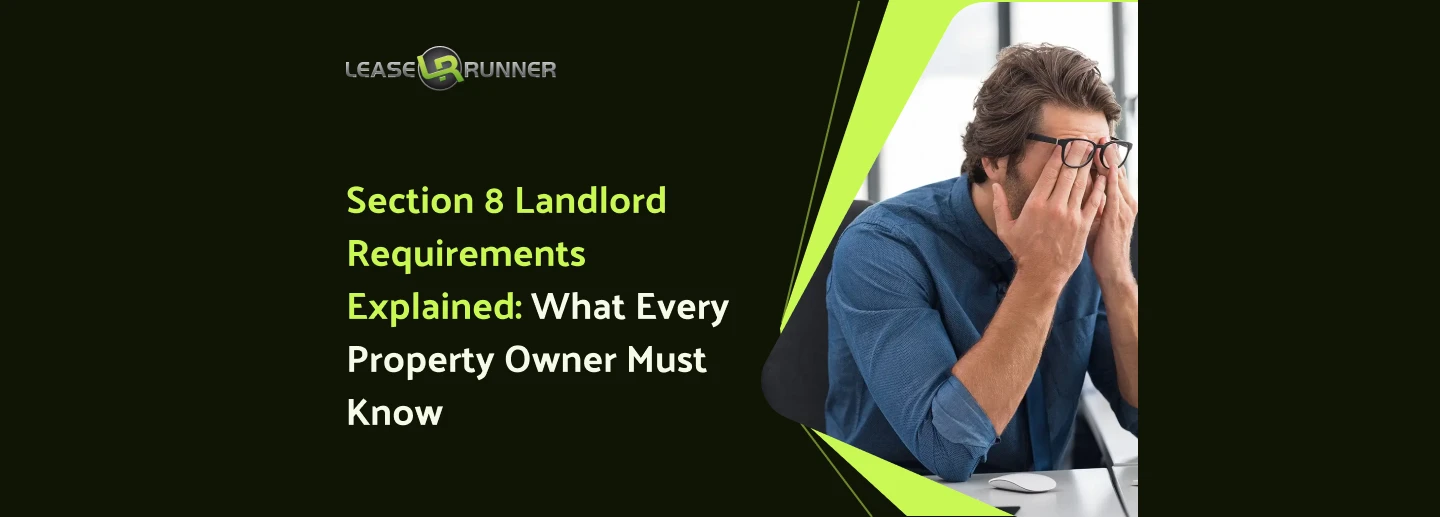“What is identity proofing?” is one of the most important questions landlords must answer in today’s world of online applications and remote leasing. Renting to someone you’ve never met is common, but it’s also risky—identity theft, tenant fraud, and scam applications are on the rise.
To keep your property secure, you need a strong, legal, and reliable system to check who’s really applying. This guide explains the identity proofing meaning, shows real identity proofing examples, covers the full identity proofing process, and answers “what are proofs of identity” in real rental situations. If you want to approve only legitimate tenants and protect your investment, this resource is for you.

Quick Facts Table: Identity Proofing for Landlords
What is Identity Proofing?

Let’s start with the basics—what is identity proofing for landlords? Identity proofing, also known as identity verification or identity validation, is the crucial process of confirming that a rental applicant is truly who they claim to be. Unlike authentication (which checks if a returning renter is legit), identity proofing happens before you sign the lease. It’s the baseline for landlord safety and a legal rental process.
The identity proofing meaning goes further than just looking at a driver’s license.
It means a thorough, multi-step process of collecting and cross-referencing documents, checking facts, and running background checks to ensure no information has been falsified or hidden.
Common Identity Proofing Documents:
- Photo ID: A driver's license, state ID, or passport.
- Address verification: A utility bill, bank statement, or official mail.
- Proof of legal identity: A Social Security card or national insurance number.
- Employment or income proof: A pay stub or tax return.
Digital Identity Verification Methods:
- Biometric verification: Using a live selfie to match the photo on a government-issued ID.
- Online identity verification services: These platforms cross-check information against multiple databases.
- Watchlist & sanction screening: Checking names against databases for politically exposed persons (PEPs) or other flagged individuals.
- Credit report cross-check: Verifying that the name, date of birth, and Social Security Number on the application match the credit report.
- Fraud database screening: Checking for any red flags, such as SSN fraud or known fraud cases.
- Right-to-Rent verification: For UK landlords, this is a specific check to ensure a tenant has the legal right to rent a property.
What are proofs of identity in a rental contract? They include driver’s licenses, state IDs, passports, credit checks, Social Security documentation, and mail in the applicant’s name. They are the backbone of a secure identity proofing process.
How Identity Proofing Works in the Rental Process?

Remote and digital leasing is the new normal, so landlords must build a secure path for tenant screening. Here’s how a typical identity proofing process unfolds:
1. Collecting Government-Issued Photo ID
Step one is always getting a government-issued ID—driver’s license, state ID, or passport. Landlords require a high-quality scan or photograph, submitted through a secure online portal. The document should not be expired, should show a clear photo, and must match the information on the application.
Identity Proofing Examples in rental process:
- A tenant submits a driver’s license, which matches the name and address on the application.
- A passport scan, clearly showing date of birth, should be checked against the application.
2. Cross-Checking Application Information
After collecting the ID, compare the applicant’s details (name, address, employment, phone) to supporting documents: pay stubs, bank statements, utility bills, and references. The goal is to spot inconsistencies and root out fraud before a lease is signed.
Identity Proofing Examples in the rental process:
- Matching the address on the application with the one on a submitted utility bill.
- Verifying that the employer's name on a pay stub matches the one listed on the application.
3. Background and Credit Checks
A crucial part of any thorough identity proofing process is running professional background and credit checks. These checks verify the Social Security Number, validate previous addresses, and match credit/debt records.
Discrepancies (like mismatched SSNs or unexplained addresses) mean the identity proofing process must stop until clarified. A tenant background screening tool helps you to automatically verify an applicant’s identity by cross-referencing their provided information with national databases and public records. LeaseRunner’s tenant background screening tool can help you here.
Identity Proofing Examples in the rental process:
- The SSN provided on the application is verified against the credit report to ensure they match.
- The credit report shows previous addresses that align with the information provided by the applicant.
4. Automated Identity Verification Tools

To streamline the identity proofing process, many landlords now use digital identity tools that compare uploaded ID photos against real-time selfies or scan government/credit databases. These catch fake documents and cross-check instantly against legal sources. LeaseRunner’s online process, for example, uses automated checks for fraud in rental.
Identity Proofing Examples:
- Applicants take a selfie and upload their ID to the software, which confirms a match in seconds.
- Online identity tools scan national watchlists for flagged names.
5. Verification of Rental and Employment History
The identity proofing process extends beyond personal details to a tenant's history, which is crucial for assessing reliability. By integrating these checks into your comprehensive identity proofing process, landlords can verify that the applicant’s claims about their past are accurate.
- To verify employment: Ask for proof of income (pay stubs, job offer letters, W-2s) and contact the employer to confirm the applicant’s position and duration of employment.
- To verify rental history: Ask for rental references from previous landlords. As part of a robust identity proofing process, you should call these references to verify the length of stay, payment record, and move-out reason. These steps help you confirm that the person's claimed history is legitimate and that they have a track record of being a responsible tenant.
Details on how landlords verify employment make this step foolproof, and integrating these checks into a single, automated identity proofing platform can save significant time and reduce the risk of fraud.
6. Data Security and Legal Compliance
Landlords must respect privacy. This means covering up Social Security Numbers on physical documents, transmitting and storing data securely, following privacy laws like the FCRA, and responsibly discarding all documents when no longer needed. Not doing so risks lawsuits or penalties.
7. Documentation and Consistency
For a reliable identity proofing process, document every check you perform—who did it, what was checked, and the info received. Use the same process for all applicants, so no one can claim bias or unfair treatment.
Identity Proofing vs Authentication: What’s the Difference?

Understanding the role of identity proofing and authentication helps landlords screen tenants and keep rentals secure. Both are critical parts of the identity proofing process. But each serves a different purpose and happens at a different stage.
Identity Proofing for New Tenants (Screening Phase)
Identity proofing starts before a lease is ever signed. The goal is to check if the applicant is who they claim to be. For example, ask the applicant to upload a government photo ID, such as a driver’s license or passport. To add more confidence, you can request a recent utility bill or a pay stub.
Another effective step is to check the Social Security Number with a credit report or employment record. If every detail matches—name, birthdate, address—you can be sure you have a real applicant.
These are practical identity proofing examples that landlords use. Checking these details helps you avoid renting to someone with a stolen identity, which is critical for safety and legal compliance. Understanding the identity proofing meaning ensures you screen every tenant the same way, keeping your process fair.
Authentication for Returning Tenants (Login/Access Phase)
After a tenant's identity has been successfully proven during the application stage, authentication becomes the next crucial step. Authentication is the ongoing process of verifying that the person trying to access your system—such as an online rent payment portal or a maintenance request form—is, in fact, the same approved tenant.
This ensures that only authorized individuals can access sensitive information and services, protecting both your business and your tenants' data.
Simple methods like a password or PIN are a common form of authentication. For a more robust defense against fraud, you can use additional layers of authentication. These layers can include Multi-Factor Authentication (MFA), where the user must provide two or more verification factors, such as a code sent to their phone and a password.
Other advanced methods include biometric matching, which compares a live photo or selfie to the one on file from the identity proofing stage, and device recognition, which confirms the tenant is logging in from a known device.
When a tenant logs in, answers a security question, or enters a special code, you can be confident that you are interacting with the correct person.
This process is essential for keeping your online systems secure and preventing unauthorized access. It builds on the initial identity proofing you performed during the application phase.
By using identity proofing at the start and authentication throughout the lease, landlords protect their business from fraud. Each process uses distinct steps and tools, but together, they provide solid proof and peace of mind from the first application to the last rent payment.
Key difference: Identity Proofing vs. Authentication
Identity Proofing (Onboarding)
- Focus: Verifying that a person's claimed identity is real and correct. This is a one-time process during the initial application.
- Methods: Checking government-issued IDs, verifying Social Security Numbers, cross-referencing public records, and confirming addresses and employment.
- Goal: To establish a verified identity for a new tenant.
Authentication (Access Phase)
- Focus: Verifying that a person is who they claim to be, for every login or transaction.
- Methods: Using passwords, security questions, PINs, or multi-factor authentication codes sent to a trusted device.
- Goal: To ensure only the proven tenant can access their account or services.
Examples of Identity Proofing Methods for Landlords

It’s not enough to check one document—true identity proofing uses a mix of these methods for ironclad safety.
1. Collecting and Inspecting Government-Issued Photo IDs
Always get a colour scan/photo of the applicant’s current driver’s license, state ID card, or passport. Check the expiration date, name, and address. Does the photo match the applicant in the video or other photos? If not, dig deeper.
2. Cross-Referencing Documents and Application Details
Check utility bills, pay stubs, and bank statements—do they match the claimed address and name? Does the employer’s letter match the application? Quick clue: a pay stub from an unfamiliar company or from a different state than the applicant’s current “home” can be a red flag.
3. Social Security Number (SSN) Verification
Always run a background and credit check through a legal service, not by hand. SSNs should match the applicant's name, date of birth, and past addresses. A flagged, stolen, or for-sale SSN can signal identity fraud.
Why Landlords Should Use Remote Identity Proofing?
Remote identity proofing isn't just smart—it's now the standard for safe, legal, and professional leasing. In-person identity proofing, while a traditional method, often relies on a physical check of a government-issued ID. This manual process is time-consuming, prone to human error, and less secure, as it's easier to miss details on a fraudulent ID.
Remote methods, however, use automated digital tools to verify a person's identity in real-time, often cross-referencing multiple data sources. This allows landlords to screen tenants from anywhere and is a more efficient and reliable alternative.
1. Prevent Fraud and Tenant Scams
More tenants are applying sight unseen. Fraudsters may use fake IDs or false documents. By using an identity proofing system, you catch these attempts before a lease is signed.
Identity proofing examples:
- Rejecting an application when ID or SSN checks don’t match.
- Stopping a scam when a background check shows addresses don’t line up.
2. Comply with Legal Requirements Easily
Adhering to privacy, equal treatment, and documentation laws is easier with digital proofing services, as every check leaves a record.
3. Save Time and Resources
Automating parts of the identity proofing process lets you review more applications with less time, reducing paperwork and admin costs.
4. Reduce Risk of Legal and Financial Issues
Failing to use identity proofing can let in scammers who don’t pay or damage your property. Even worse, it can open you up to lawsuits if a scammed tenant sues for discrimination or data loss.
By following a consistent, legal, and well-documented identity proofing process, you reduce the risk of costly legal fights or months of unpaid rent. LeaseRunner’s checklist on how long a rental application takes offers more on the timing and legal benefits here.
5. Enhance Tenant Trust and Professionalism
Good tenants appreciate landlords who protect their privacy and follow clear, professional processes. Using a structured identity proofing process—with outlined steps and data protection—shows you value both your property and your tenants’ information. Consistency boosts your reputation in the market and encourages stronger tenant relationships.
Best Tools to Verify Tenant Identity Online

Choosing the right tools is essential for a safe and efficient identity proofing process. With more scams happening every year, landlords need solid, digital solutions. Here are three standout services that showcase smart and secure identity proofing examples:
1. LeaseRunner
LeaseRunner builds its entire platform around safe, remote screening. Landlords ask tenants to upload government photo IDs and enter their Social Security Numbers. LeaseRunner checks details like names and addresses against trusted databases.
Part of their identity proofing process includes quick credit and background checks. Every scan, match, and report stays encrypted—keeping information private and compliant.
Access to our full-detailed tenant screening checklist and avoid certain screening mistakes for choosing the ideal renter!
2. TransUnion SmartMove
SmartMove gives landlords fast access to national background and credit reports. The system uses national databases to confirm what are proofs of identity, such as names, SSNs, and addresses.
SmartMove sends alerts if details do not match, helping spot fake applications. This tool adds another layer to your identity proofing meaning.
3. RentPrep
RentPrep combines digital checks with a human touch. Their team reviews IDs, checks criminal records, and looks for past evictions. RentPrep’s experts are ready to answer your questions about any application—a good example of hands-on identity proofing examples for landlords who want extra support.
By using these tools, you create a record of every step and keep sensitive information secure. They help make your identity proofing process simple and safe for every tenant, whether they apply in person or online.
Conclusion
Knowing what identity proofing is and performing it is no longer an optional step for landlords—it’s the bedrock of safe, legal, and successful renting. Building a clear, repeatable identity proofing process—from collecting and checking legal IDs to using online screeners—lowers your risk and protects your assets.
The most successful property managers now require strong proof of identity, professional digital screenings, and to keep data secure and private. LeaseRunner gives you access to proven tools that make identity proofing easy, fast, and reliable.
By learning the identity proofing meaning, using multiple identity proofing examples, and leveraging trusted technology, landlords can verify tenants confidently in every situation. For smarter screening, consult our expert guide to tenant questions and adopt a digital-first rental strategy today.
FAQs
Is identity proofing required by law for landlords?
It depends on the location. Many states and cities require landlords to verify a tenant’s real identity, and nearly all privacy laws demand clear data storage. Even where not strictly required, failing to run identity proofing can expose you to fraud, illegal subletting, and civil penalties.
Can I verify a tenant’s identity without meeting them?
Yes. With modern tools, landlords can collect, scan, and confirm IDs, documents, and background info online, making it simple to follow a secure identity proofing process while rarely meeting applicants in person.
What are the risks of not verifying identity before lease signing?
The risk is high—unverified tenants can lead to lost rent, property damage, fake social security info, or lawsuits if another person’s identity is used. Solid identity proofing is your best defence.







